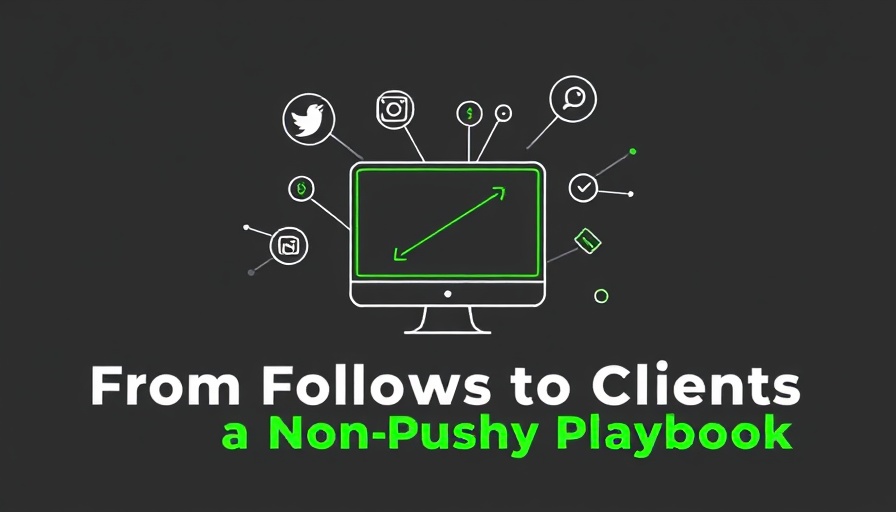
Turning Followers into Clients: A Needed Shift in Strategy
In today's digital landscape, businesses often struggle to convert social media followers into paying clients. The rise of cautious consumers who value authenticity over hard sales tactics necessitates a fresh approach. While it may be tempting to bombard followers with offers and promotions, this strategy can backfire, leading to disengagement. Instead, businesses must focus on relationship-building and trust.
Understanding Your Audience: The Key to Engagement
To effectively convert followers, it's crucial to understand their motivations and pain points. Engaging content that addresses these issues not only shows that you understand your community but also positions your brand as a reliable solution. By utilizing engagement strategies such as polls, Q&A sessions, and even social media takeovers, businesses can create a two-way dialogue that fosters relationships.
Provide Value, Not Just Products
One of the most effective ways to turn followers into clients is by consistently providing value. This can take many forms—educational content, special promotions, or even exclusive behind-the-scenes looks at your brand. For instance, a local bakery might share baking tips or recipe ideas on its social media, creating a community around shared interests. These interactions not only drive engagement but also build brand loyalty.
The Science of Targeted Advertising
Incorporating targeted advertising plays a significant role in the conversion process. By utilizing data and analytics, businesses can create personalized ads that resonate with their audience. This means running ads that not only highlight products but also tell a story that aligns with follower interests. According to recent data, posts with a storytelling element attract significantly higher engagement levels.
Leverage Influencer Marketing
Influencer partnerships offer a strategic avenue for expanding reach and enhancing credibility. Collaborating with influencers who align with your brand values allows you to tap into their established trust with followers, turning their audience into potential customers. Platforms like Instagram and TikTok are ripe for these collaborations, leading to organic conversions.
Feedback as a Tool for Improvement
Listening to customer feedback can significantly enhance your approach. Social media is a prime platform for gathering insights on what resonates with your audience. Conduct surveys, ask for opinions, or simply monitor comments. These insights can guide content strategy improvements, ensuring it is more aligned with your audience's desires, ultimately leading to higher conversion rates.
Making Use of Effective Call-to-Actions
Integrating clear, compelling calls-to-action (CTAs) within your social posts is essential. A simple 'shop now' or 'learn more' can lead followers toward conversion. However, ensuring that these CTAs offer a unique benefit or insight is key—this instills a sense of urgency and value, prompting engagement.
Creating Engaging Visual Content
Content marketing strategies often overlook the power of visuals. Eye-catching graphics and videos can elevate engagement on social media. For example, short how-to videos or engaging infographics can convey complex information easily and catch followers' attention quickly. This can lead to increased shares and higher conversion potential.
Adapting to the Digital Transformation Landscape
As the world continues to shift towards digital platforms, companies must adapt their strategies accordingly. Understanding marketing automation tools can streamline engagement processes, allowing businesses to focus on creating personalized experiences. Automation in email campaigns, for instance, can deliver timely promotions to followers based on their interactions with your content, enhancing conversion rates.
Conclusion: The Future of Engagement
Converting social followers into clients is no easy feat, but with a focus on relationship-building, value delivery, and strategic advertising, it is achievable. As digital marketing trends evolve, businesses must remain agile, adapting their strategies to harness the power of effective communication and authentic engagement. Don't just push for sales; build a community that trusts and supports your brand.
Stay ahead of the curve in digital marketing by embracing these insights and analyzing your engagement metrics. This will not only enhance your online presence but ultimately lead to the growth of a loyal customer base. Connect, engage, and transform your followers into lifelong clients.
 Add Row
Add Row  Add
Add 




Write A Comment